We set off from Perth to Sydney without a spare tyre, as our Kona – like many other EVs – did not come with one. And Co-Pilot provided many cautionary reminders out of a UK research demonstrating that EVs are more likely to have wheel and tyre issues than pretty much any other sort of problem.
In Sydney, the nice people from Hyundai came to my rescue with a tyre, which though not brand new, would be absolutely fine in an emergency! Especially because we were highly unlikely to have a flat, as a senior technician pointed out (let’s call him T).
Eco-tyres used on EVs, he said, are ‘generally of better quality and more durable than those on most ICE cars on the road’.
Befuddled, I wonder aloud about the British research Co-Pilot has been rehearsing. ‘I guess’, T speculates, ‘EVs have so few problems compared to other cars! So, punctures may be one of those few things that sometimes happen?’
On the return journey back west, armed with the spare tyre and reassuring advice, I am eager to try Evie (our EV) on unsealed tracks. From the Nullabor Roadhouse we plan to head inland in search of the Murrawijini Caves. This dirt track can be dangerous in the rain, but the sun is shining on our little expedition.
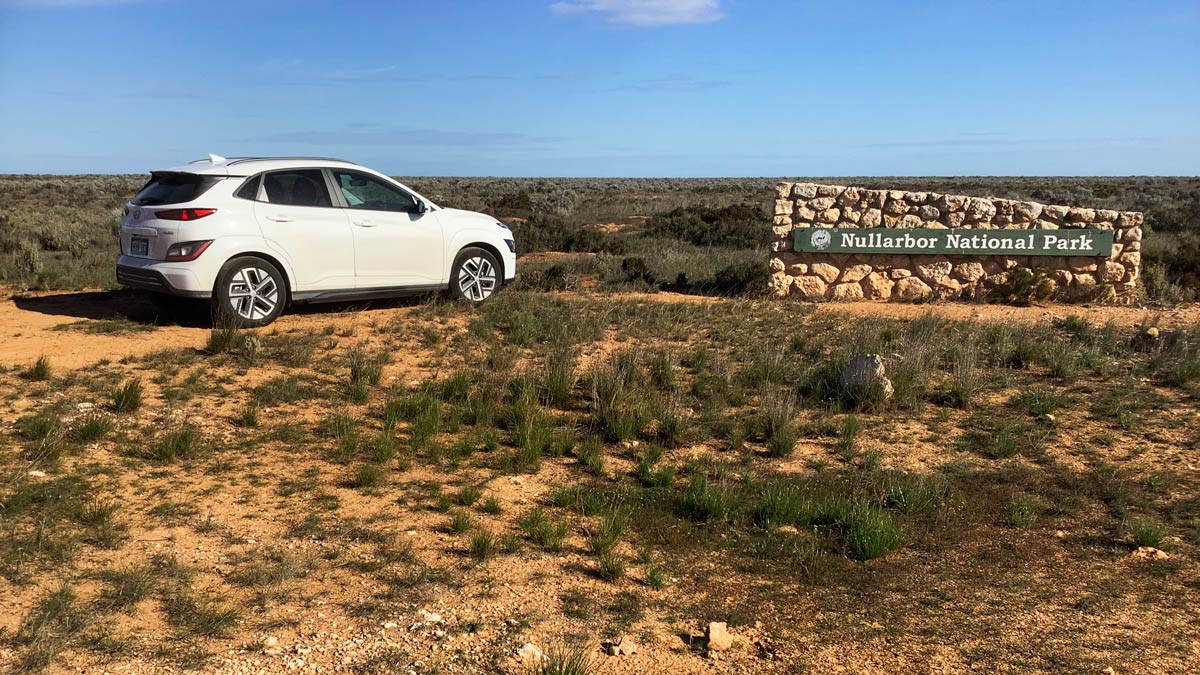
Less than 500 metres from the Highway, on a red dirt-track, Google drops out.
The road is unmarked. We pause for thought where the ghost of a dead ICE car is slowly melting into the dust. It portends nothing more than the future of old technology, we say as we press on along the rocky trail and are quickly rewarded by the appearance of a wild dingo – particularly exciting as the many signs all along the Nullarbor warning about kangaroos, emus and camels crossing have not materialised for us.
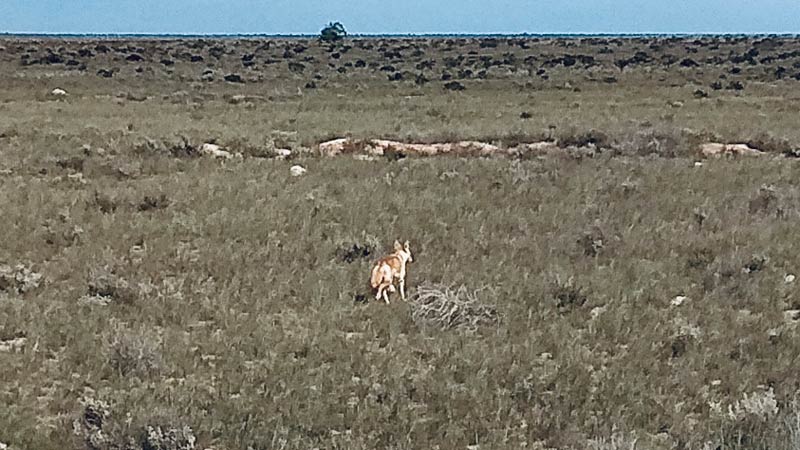
The caves are easy enough to find, particularly after we catch up with two still-working ICE cars just ahead of us. To the untrained eyes and with little information, the caves look like big holes in the ground.
Happily, however, our EV has bounced along the 22 kilometres of potholes and rocks held together by red mud and no slower than any other two-wheel SUV.
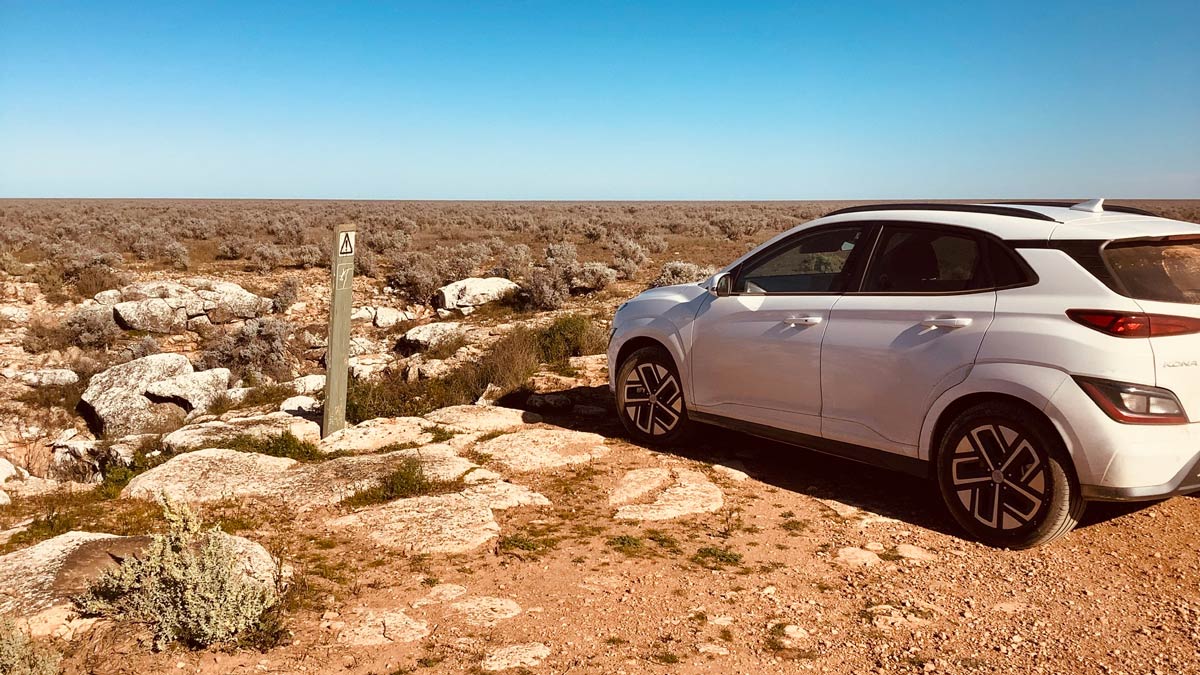
The not-to-be-missed experience of the Nullarbor is a little to the east of the Roadhouse. A small, detour from Eyre Highway, south to the ocean brings you to the Head of Bight Visitor Centre.
From June to October and especially in July-August Southern Right Whales come here to calve. We have timed our trip perfectly, as have several dozen other people, just at this moment! In season 200-300 tourists visit every day. Some come repeatedly. ‘Our annual pilgrimage’, as one South Australian woman explains.
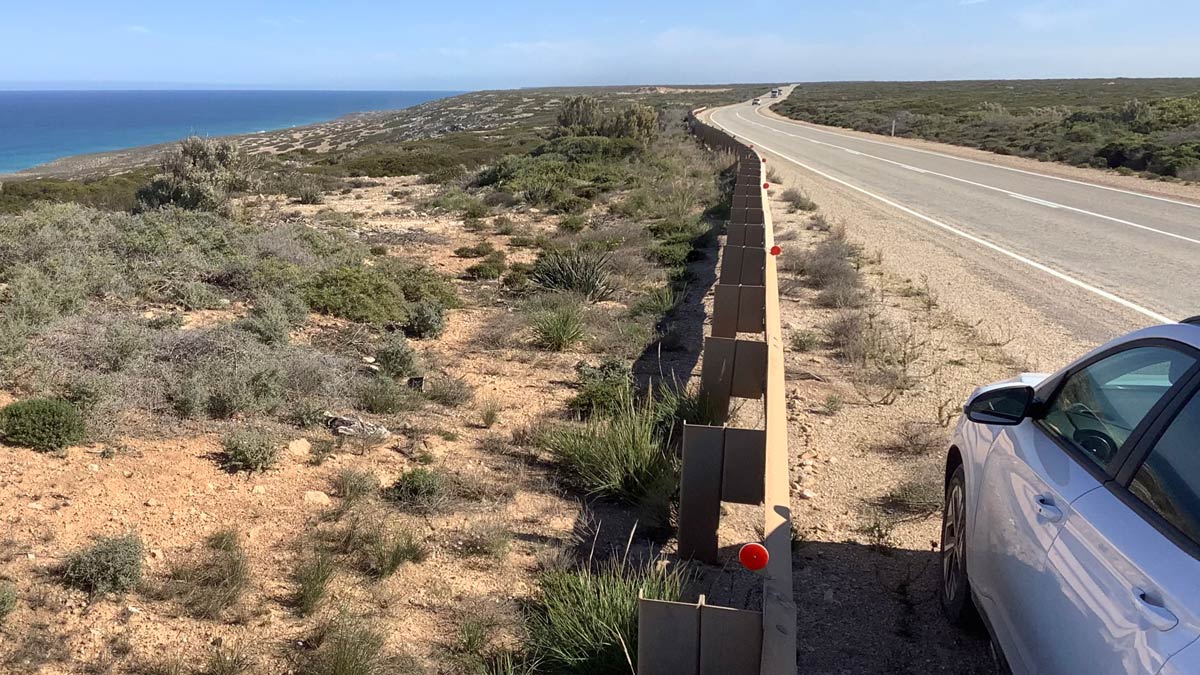
The walkway winds down the cliffs to the edge of the ocean. A hundred metres below, a whale nursery! This morning the researchers counted 165 whales here. Most of us visitors can see a dozen or so mothers and babies twisting, turning, spouting, and playing in the waves.
You can stay as long as you want. Priceless!
In the carpark, 15 cars, mostly 4WDs. You have to wonder how much damaging pollution is being added to the environment by those who have come to admire nature at its most glorious.
Lesson #5: Get off the beaten track and have a whale of a time with your EV on the Nullarbor!
Editor’s note: Be prepared if going off-road on Australian outback in an EV, and be aware that range will drain faster than on a smooth highway road. Also, letting some air out of your tyres can assist with avoiding punctures.
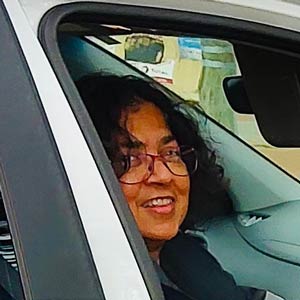
Hurry Krishna is Indian by birth, Australian by accident and a slow traveller by choice. She is an occasional travel blogger and has recently joined The Driven’s team of writers. She speaks a number of Asian languages, including English, and hopes to walk, cycle or drive her trusty Kona EV far and wide around the world. Under a different name she is a professor and has written many academic books and papers in her areas of specialist research in Media and Cultural Studies.

